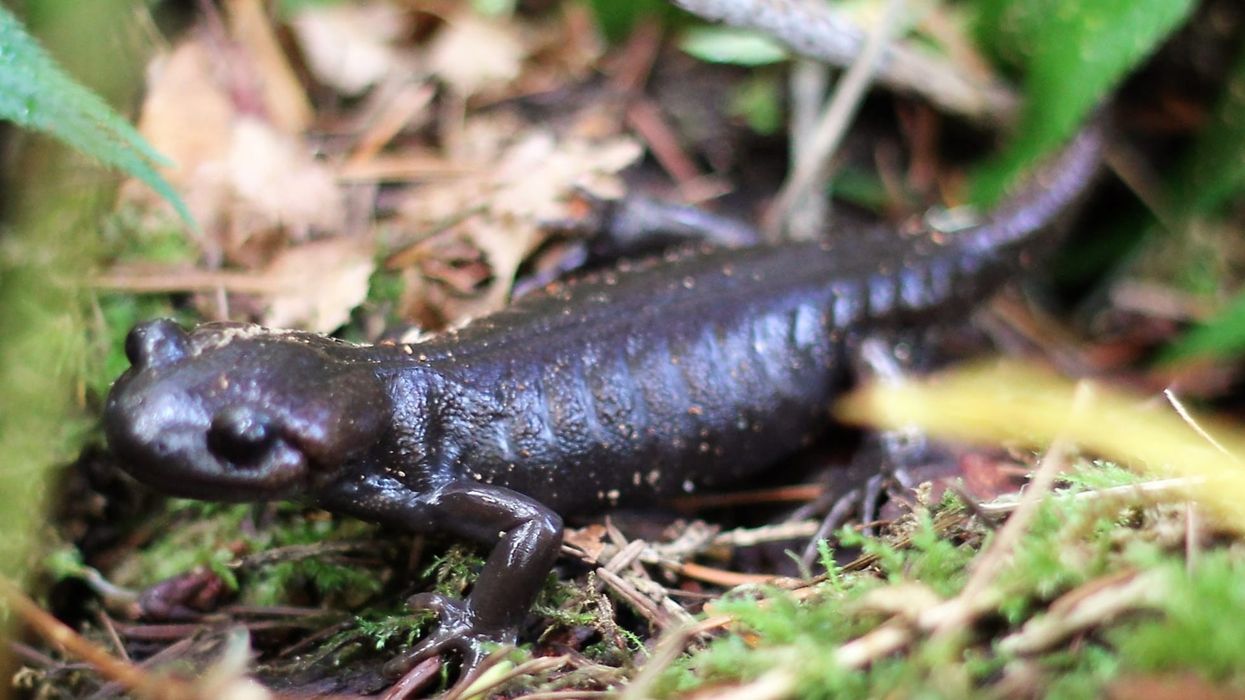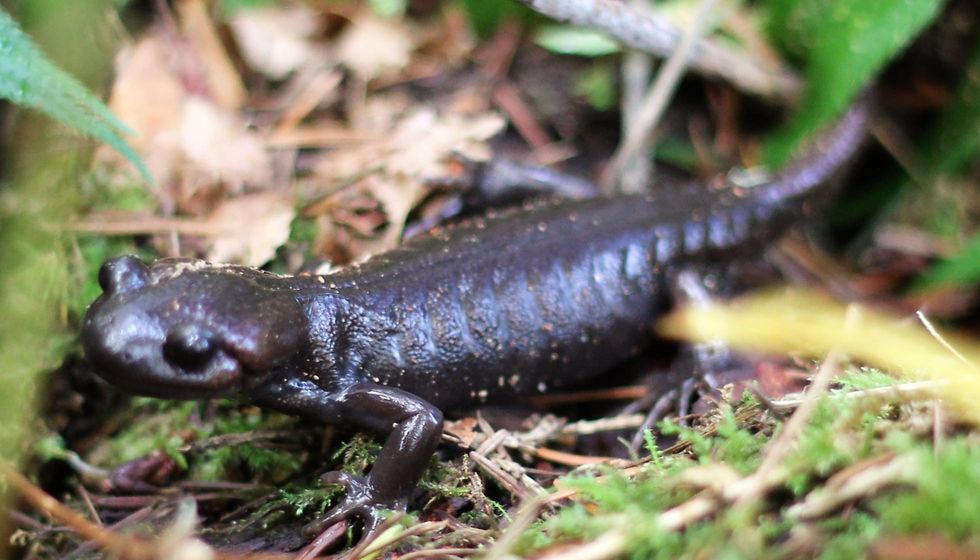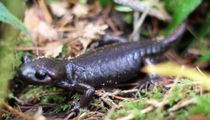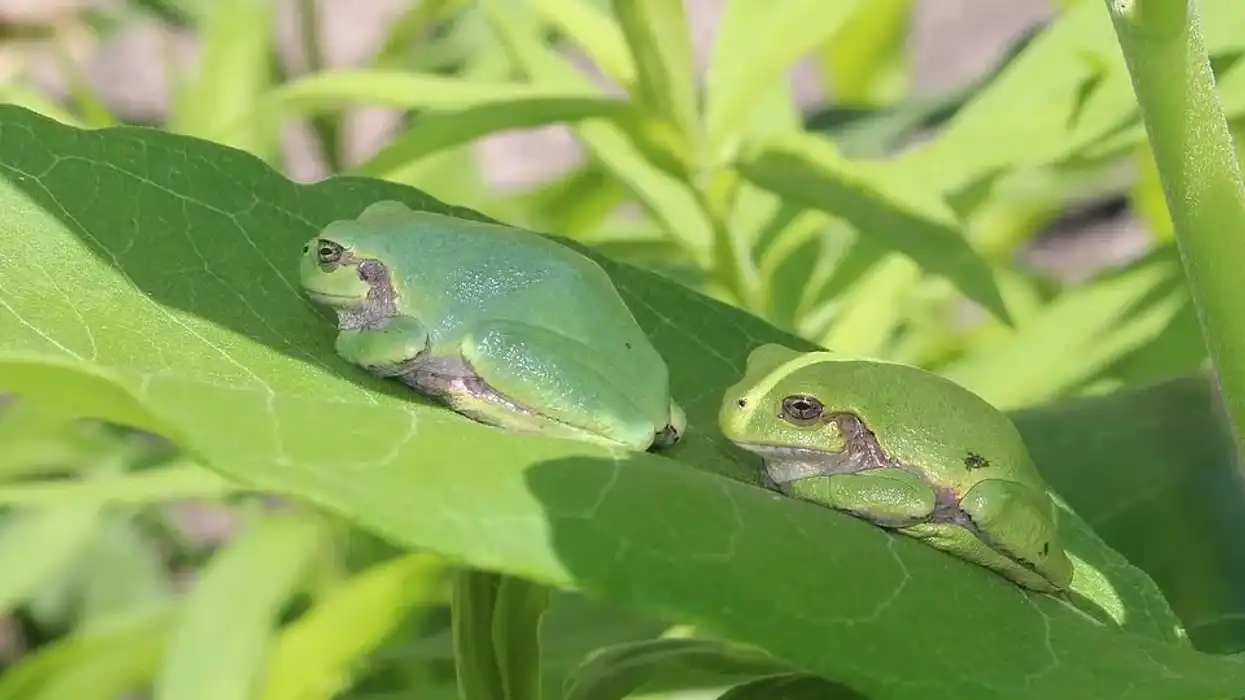Fun Pacific Northwest Salamander Facts For Kids
Pacific northwest salamanders, (Ambystoma gracile), belonging to the Amphibia class and the Ambystomatidae family, are found in California, Washington, western British Columbia, and more. These species are not present in Idaho.
Salamanders are a type of amphibian; they are commonly seen in moist habitats near or in water. Salamanders are more related to frogs notwithstanding how different frogs and lizards look. Lizards have dry scaly skin and are completely terrestrial.
Pacific northwest salamanders exist in wet forests or partially woody regions. They are endemic to the Pacific Northwest in North America.
Ambystoma gracile is a huge, heavy-bodied salamander with brown, green, gray to the nearly black coloration of their soft skin. The salamander's head is small, round, and full with small bulging eyes.
Aquatic adults spend much of their lives underground, often using the tunnel of burrowing animals such as mole salamanders and ground squirrels.
Converted aquatic adults are most likely to be seen on rainy nights during migration from aquatic breeding sites or in the pool when breeding in ponds, lakes, and streams.
They are found under objects or things near breeding pools or streams in the breeding time. Their conservation status is of Least Concern as per International Union for Conservation of Nature as they have a stable population.
For more relatable content, check out these spotted salamander facts and hellbender salamander facts for kids.
Pacific Northwest Salamander Interesting Facts
What type of animal is a Pacific northwest salamander?
The Pacific northwest salamander is a type of mole salamander, which can be found mostly near sea coasts, islands, and forests.
What class of animal does a Pacific northwest salamander belong to?
The Pacific northwest salamander (Ambystoma gracile) belongs to the Amphibia class of animals and populates the northwestern Pacific coast of North America
How many Pacific northwest salamanders are there in the world?
The total population of these amphibians across the world has not been identified yet.
Where does a Pacific northwest salamander live?
They live in the Alaskan Panhandle on May Island, within the Washington and southern Oregon coast to the mouth of the Gualala River, Sonoma County, California. It happens to reside from sea level to the tree zone, but not east of the cascade mountains.
They prefer to live in forests, woodland, wetlands, islands, and sea coasts. They are restricted to the Pacific coast of North America.
What is a Pacific northwest salamander's habitat?
The Pacific northwest salamander (Ambystoma gracile) is located in a diversity of moist habitats which include open grasslands, woods, and forests near freshwater sources. These species can be found greatly in places like Washington, Oregon, and California.
Their habitat in the wild is highly preferred by these animals as they like to explore different settings. Oregon has different rare species of these amphibians.
Who do Pacific northwest salamanders live with?
Pacific northwest salamanders generally live alone, but during the breeding season, these reptiles stay in pairs or groups.
How long does a Pacific northwest salamander live?
The Pacific northwest salamander has life spans differing by species. But, they generally live for 5-10 years.
How do they reproduce?
In the wild, Pacific northwest salamander's breeding season occurs between January to April as they grow adult. As adults, they become sexually mature at one or two years of age, which is when they reach adulthood.
Aquatic adult transfer to breeding waters and strain between January and April at low-elevation aquatic breeding sites. At other times of the year, they stay in and under rotten woods or in moist places under such rodent burrows.
They are usually found under surface objects near breeding lakes or streams in the breeding season, and under driftwood on streambanks after blow waters fall. Breeding happens once annually.
Males and females are always monogamous in that once a female becomes a spermatophore inside her body, the eggs are prepared. Yet, new mates are picked each year and length depends on the production of a mating ceremony.
Breeding sites are both hard and semi-permanent bodies of water. Migration to these areas occurs during the transition from winter to spring.
Upon meeting with a possible mate, the male salamander dorsally fixes the female and excites her with his chin and tail.
Afterward, the male swims a short distance away and inserts a sperm. If breeding interest still breathes, the female will follow.
The male salamander then excites the female in a behavior similar to a tickle as she inserts the sperm into her cloaca to breed her eggs. It should also be remarked that other production rituals have been seen, including conventional attempts at insertion of the sperm by the male.
Anyways, if this behavior fails, and the sperm is picked up by the female and embedded into the cloaca. Eggs are collected between January and May.
Egg masses are typically connected to rooted marine plants. Egg masses grow algae that develop on the inside of the eggs, furnishing them a green color.
The salamander larvae develop after around one month but may take as many as nine weeks to prepare. The larvae become adults within one or two years.
What is their conservation status?
The conservation status of these amphibians species is of Least Concern as their population is stable. Mole salamanders may not require protection as their population is stable for now. However, the giant salamander species, currently existing in Oregon, must be protected by the wildlife to secure their population as their number is decreasing.
Pacific Northwest Salamander Fun Facts
What do Pacific northwest salamanders look like?
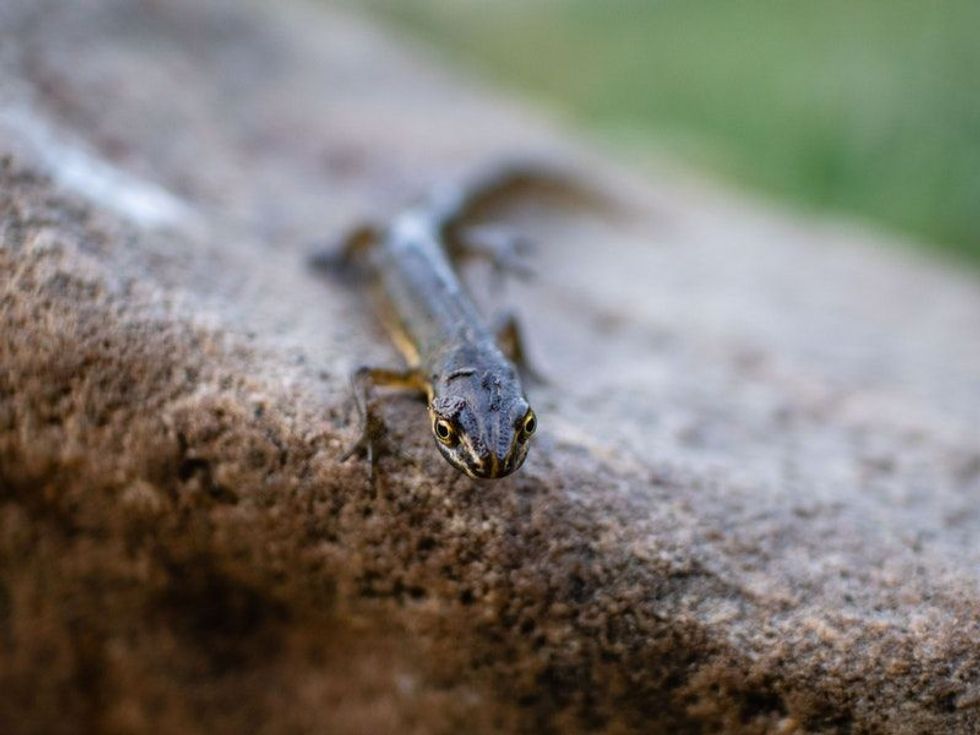
We've been unable to source an image of a northwestern salamander and have used an image of a common salamander instead. If you are able to provide us with a royalty-free image of a northwestern salamander, we would be happy to credit you. Please contact us at hello@kidadl.com.
In the wild, the northwestern salamander is usually dark brown but can change to gray, black, and maybe flecked with cream or yellow. But, its larvae have a lighter body coloration.
The northwestern salamander can grow up to 10.2 in (26 cm) in total length. But, as adults, they generally have a total length of around 8.7 in (22 cm).
Its large, rounded head has giant and protruding dark eyes behind which grow large parotoid glands for a defense response. Comparable organs are found on the top ridge of the tail.
The tail is vertically compressed and moves along the sides of the body. The amphibians and reptiles have long light gills, light or clear tails, and are dark with light mottling on the head and light below.
Adult members have gills and other larval features and remain in marine habitats their whole life.
These floating adults are common and happen to be found more often at higher mountains. The females are a bit bigger than the males.
Pacific northwest salamander eggs are laid in orange firm masses which are of grapefruit's length and contain up to 270 eggs each. Each egg is embedded in its jelly layer, with an extra layer of jelly containing the entire mass, giving it a smooth to the lightly rough or vibrating surface.
When it appears threatened the northwestern salamander implies a pose that looks like someone trying hard to do a pushup. As adults, they can defend themselves with their poison glands.
How cute are they?
The terrestrial adults may look quite slimy, but the little ones are cute to look at.
How do they communicate?
They communicate using chemicals.
How big is a Pacific northwest salamander?
Pacific northwest salamanders have a total length of 8.7 in (22 cm), which is two times bigger than a sand lizard.
How fast can a Pacific northwest salamander run?
Pacific northwest salamanders normally run quite slowly, although they can run fast to get away from risk. Normally salamanders run or crawl on land, underground, in forests, or on the bottom of lakes.
How much does a Pacific northwest salamander weigh?
The total weight of these amphibians is unidentified as they are quite difficult to weigh.
What are the male and female names of the species?
There are no separate names to describe males and females.
What would you call baby Pacific northwest salamanders?
They are called salamander nymphs or larvae.
What do they eat?
Northwestern salamander eats small insects. Terrestrial adults eat sea worms and tadpoles. Hatchlings first consume tiny marine crustaceans then, as they get bigger, they use catch bigger prey which includes insect worms, snails, tadpoles, and fairy shrimp. Aquatic adult salamanders feed on small terrestrial invertebrates (insects, arachnids, worms) and neotenic adults and larvae eat aquatic insects.
Are they poisonous?
If the defensive posture doesn't control an attacker's attention, the northwestern salamander will leak a viscous white material from poison glands in its throat, back, and tail. This poison is probably dangerous to small animals but only vexatious to human skin.
They produce poison glands in their head and along their tail too.
Unlike most other local amphibians, the northwestern salamander can live in a habitat where invasive hungry fish and bullfrogs have settled populations, likely because of the robust results of its toxins on predators. To show their poison glands to potential predators, these reptiles show a defensive posture by extending their legs, tuck their heads down and arch their backs.
Would they make a good pet?
With proper care, you can keep salamanders as a pet. However, it is uncommon to keep them as pets.
Did you know...
The title salamander arises from the Greek word for fire lizard. Salamanders are nocturnal.
Salamanders can be dangerous and some have teeth. The giant salamander in the world is the Chinese giant salamander.
It can develop to a length of 5 ft (152.4 cm). Salamanders are able of restoring lost limbs within a few weeks, includes tail and toe allow them to persevere attacks from predators.
The salamander larvae is a tinier version of an adult, although they vary from their adult matches by the appearance of external gills, a tailfin, unique larvae dentition, a simple tongue, and the lack of eyelids.
Northwestern salamander can bite. Salamander is a shy animal that almost only bites on food.
But salamanders may mistake your hand for meals when you're trying to put their food and can bite you. Larvae normally overwinter and transform after 12-14 months at around 3.5 in (8.9 cm) in total length.
Aquatic salamanders consume their whole life in the water. Thus, the perfect ratio of water to state is 3:1. Layer the bottom of the tank with 2 in (5.1 cm) of coated aquarium rocks. Set some aquatic forests but know that you will have to restore them every so frequently because salamanders can be harsh on aquatic forests.
The largest salamander in Oregon consists of coastal giant salamanders.
Are there poisonous salamanders in Washington state?
Yes, some of them include long-toed salamander, cascade torrent salamander, Columbia torrent salamander, and coastal giant salamanders.
How long can salamanders hold their breath?
Salamanders can hold their breath indefinitely through their gills. They can stay undersea but generally will crawl out to forage and mate or go from one body of water to a different one if the circumstances in the former pool are not good.
Poor water includes water that is deoxygenated due to the breakdown causing the separated oxygen removed from the water.
Here at Kidadl, we have carefully created lots of interesting family-friendly animal facts for everyone to discover! Learn more about some other amphibians from our spring salamander facts and marsh frog facts pages.
You can even occupy yourself at home by coloring in one of our free printable Pacific northwest salamander coloring pages.
We Want Your Photos!
More for You
Bachelor of Science specializing in Human Anatomy

Joan AgieBachelor of Science specializing in Human Anatomy
With 3+ years of research and content writing experience across several niches, especially on education, technology, and business topics. Joan holds a Bachelor’s degree in Human Anatomy from the Federal University of Technology, Akure, Nigeria, and has worked as a researcher and writer for organizations across Nigeria, the US, the UK, and Germany. Joan enjoys meditation, watching movies, and learning new languages in her free time.
Disclaimer
1) Kidadl is independent and to make our service free to you the reader we are supported by advertising. We hope you love our recommendations for products and services! What we suggest is selected independently by the Kidadl team. If you purchase using the Buy Now button we may earn a small commission. This does not influence our choices. Prices are correct and items are available at the time the article was published but we cannot guarantee that on the time of reading. Please note that Kidadl is a participant in the Amazon Services LLC Associates Program, an affiliate advertising program designed to provide a means for sites to earn advertising fees by advertising and linking to Amazon. We also link to other websites, but are not responsible for their content.
2) At Kidadl, we strive to recommend the very best activities and events. We will always aim to give you accurate information at the date of publication - however, information does change, so it’s important you do your own research, double-check and make the decision that is right for your family. We recognise that not all activities and ideas are appropriate for all children and families or in all circumstances. Our recommended activities are based on age but these are a guide. We recommend that these ideas are used as inspiration, that ideas are undertaken with appropriate adult supervision, and that each adult uses their own discretion and knowledge of their children to consider the safety and suitability. Kidadl cannot accept liability for the execution of these ideas, and parental supervision is advised at all times, as safety is paramount. Anyone using the information provided by Kidadl does so at their own risk and we can not accept liability if things go wrong.
3) Because we are an educational resource, we have quotes and facts about a range of historical and modern figures. We do not endorse the actions of or rhetoric of all the people included in these collections, but we think they are important for growing minds to learn about under the guidance of parents or guardians.
